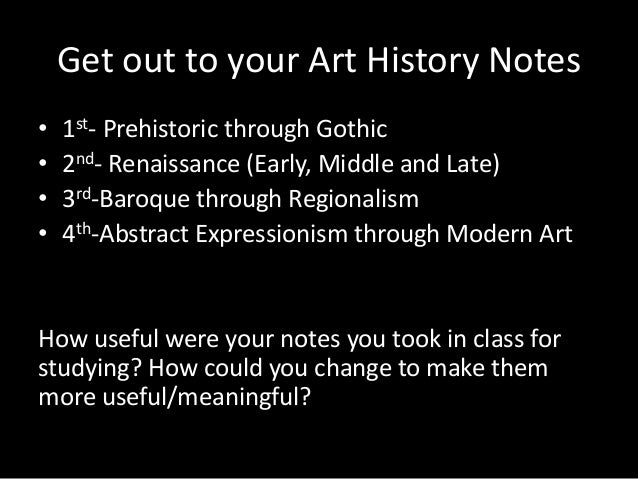Art History Study Guide


I hope you will consider taking APArt History!! If you are interested, you must first do a writing sample/readiness indicator assignment, given on multiple days in the beginning of February every year for the following fall. The class is open to all 10 th – 12 th graders who have done a writing sample.
The class is structured to prepare you for the College Board Advanced Placement exam in the spring of 2016. It is administered in May and cost $100 this past year.
Art History Test Questions
Art historical analysis (painting), a basic introduction using Goya's Third of May, 1808: Start. Introduction to cultures and religions for the study of AP Art History.
Brief Description of Course: The class is structured to prepare you for the optional but recommended College Board Advanced Placement. The class moves at a fast pace in order to cover 30,000 years of history between September and April. There will be several field trips; attendance is mandatory. There will probably be one test and one paper every three weeks on average, in addition to reading, independent research, and an oral presentation.

After the AP exam, we will focus on more in-depth research and some hands-on artwork. This course is an introduction to subjects normally grouped under the heading humanities, and is often the high school student’s first exposure to discourse concerning religion, philosophy, cultural history and anthropology, all of which are examined through the visual/cultural evidence contained in art history. Questions regarding the formation of cities, power and social structures, and systems of belief are of prime importance during the first few units. Issues regarding visual perception, the need for narrative, the nature of materials and technology, and the understanding of the human body are a major focus throughout the course. The evolving relationships between patrons, artists, and audience wind their way through each art historical period as well. Students learn to identify iconography, media, stylistic traits and the function of art in each society that they study. The nature of representation, idealization, realism, illusionism, modernism and post-modernism are defined through the study of specific artworks.
In addition to the established canon of western art, students will study non-western culture and artifacts. And finally, art history as an area of study invented partially to organize information, rather than an organically existing subject, is discussed. I hope we will be lucky enough to have 2-3 T.A.s for each section.
They are students who have already taken the class and excelled in it, and on the AP exam, and will conduct study groups for you before tests, give occasional presentation on selected topics, and be available to you for general help and questions. The text we use is Gardner’s Art Through The Ages and The Annotated Mona Lisa by Lisa Strickland; you will be provided with a take home copy of each so that you don’t need to haul textbooks back and forth everyday! Additional helpful books you may want to purchase: Barnet, Sylvan. A Short Guide to Writing about Art. New York: Harper Collins College, 1993. Barrons AP Art History Study guide or similar FYI: Gardner’s website: www.wadsworth.com/art. NOTICE: The South Orange & Maplewood School District is committed to making our content accessible to all members of the public, including those with disabilities.
This includes parents, students, employees, and all others associated with our district. If you need assistance in accessing materials on the district website or you would like to provide feedback or file a complaint about the website, please contact Caralyn Moore via e-mail at the following address cmoore@somsd.k12.nj.us. NOTICE: The School District of South Orange and Maplewood does not discriminate on the basis of race, color, creed, religion, national origin, ancestry, age, marital status, affectual or sexual orientation or sex, gender identity and expression, socio or economic status, or disability in its programs and activities. For further information, call the Office of Civil Rights at (800) 421-3481.